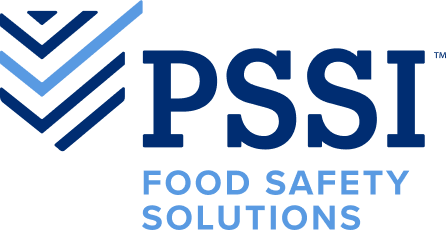Todd Mitchell, VP of Safety at PSSI
It’s quite amazing when you sit back and think about how many people wake up every day and dedicate their lives to the safety of others. Whether it be protecting the land we live on, building the cars we drive and the bridges we cross, or producing the food we eat.
There are hundreds, if not thousands of touchpoints in your everyday life where someone (likely a complete stranger) was looking out behind the scenes for the safety of you and your family.
I am lucky enough to be one of those people.
As the Vice President of Safety for Packers Sanitation Services Inc. (PSSI), the leading contract sanitation company in the food processing industry, we not only have the responsibility to help protect the food you eat, but my job is also to protect our 15,000 employees in charge of cleaning more than 500 plants across the country on a nightly basis.
The work we do is unique and has substantial risks. High noise levels, dangerous equipment, slippery floors, and harmful chemicals create a vulnerable environment for employees where they are at higher risk of injuries. It requires a heightened level of attention.
Over the years, we have dedicated a significant amount of time and countless resources around developing procedures, protocols, and training programs designed to help keep our employees safe. But, even with those policies and procedures in place and our efforts around defining safety as a ‘priority’, we still struggled to gain company-wide buy in.
So, we asked ourselves…what does making something a priority even mean? And furthermore, how could we make our priorities as a business a deeper part of our overall company culture.
I think it’s actually something a lot of businesses struggle with, which I why I thought it would be helpful in summarizing our experience on the subject.
Turns out there is quite a distinct difference between a priority vs. a value.
Priority
- – A priority is something that changes due to outside influences and demands.
Value
- – A person’s principles or standards of behavior; one’s judgement of what is important in life. A value is something that influences cannot change.
Priorities are something that will shift due to a variety of influences or demands, whereas a value is something that guides someone’s behavior. If we don’t value our safety as individuals then we probably aren’t as likely to respond to the guidance being set forth by others trying to protect you.
As a leadership team, this was a very important learning for us and has significantly changed the way we approach the subject of safety and many other areas in our business. We had to dig down find ways to more effectively communicate and encourage the value of safety to our employees.
As I briefly noted above, it’s easy to take our own safety for granted. The most common being the mindless decisions you make driving a car every day. But, sometimes all it takes is hearing a story that reminds you why you should value your safety more which may force you to make better decisions in the future. Or being reminded about your family or someone that cares deeply about you and your safety.
It’s not something we normally hear every day, but when you work in higher risk environments on a daily basis it is something that has to be a more frequent topic of discussion.
This doesn’t just mean increasing the frequency of pushing your safety priorities. You have to open up and seek to more deeply understand your employees as human beings and the real values behind what drive them.
Over the last year, our team at PSSI has made significant changes to the way we communicate the value of safety at almost every level of our business based on this. From training to marketing to operations, we’ve developed new programs and messaging to help more effectively engage and communicate with our employees.
At an operations level, we make it a priority at the beginning of every shift to discuss the value of safety with each of our employees and build in breaks in the middle of shifts to regroup and get everyone’s minds back in the right place.
Plant managers and supervisors take their teams on regular field-trips around the plants to identify, discuss and solve safety hazards.
We also celebrate success, which is one of the most critical elements to success. Whether it’s rewarding employees personally for looking out for others or celebrating short-term injury-free goals as a team, it has had a significant impact for the safety of our people and our business.
From a marketing perspective, we’ve developed new signage and videos that help communicate the value of safety in a different way as well. With a diverse, decentralized workforce, we utilize videos to communicate important safety initiatives, consistently, across the country. These videos help our team members retain the information better because of their high level of engagement and ability to be referred back to.
All this said, I’m proud to report that we’ve seen a 30 percent reduction in injuries within the plants where these programs have been implemented over the last year. And these practices are continuing to spread quickly across other plants because of the success.
It is a process and not something that is easy to change overnight, but the point is that it is worth it and if you are trying to build a culture of safety it is simply not enough to prioritize it. You have to value it.
